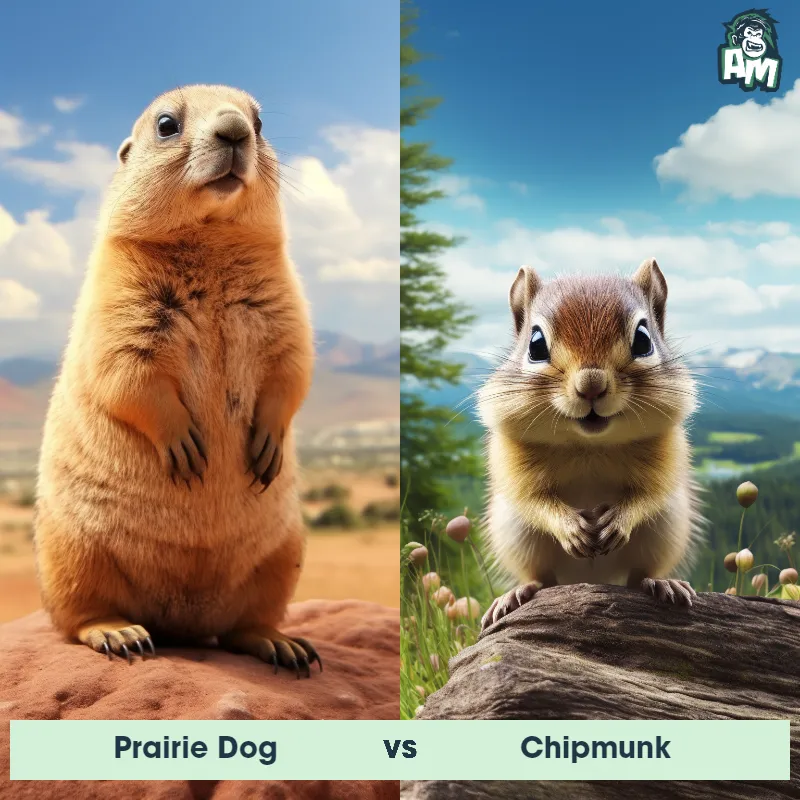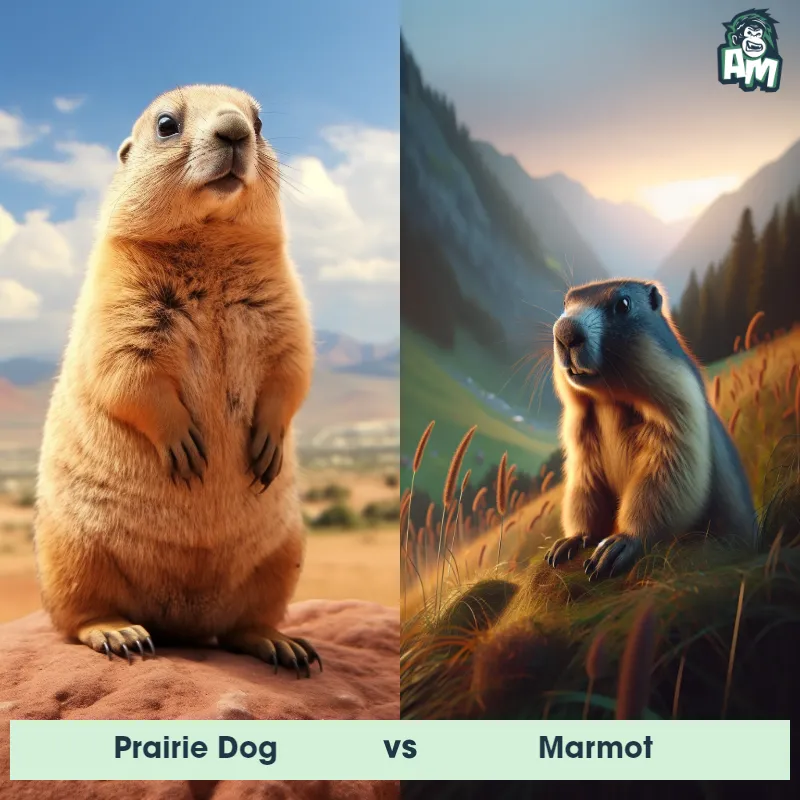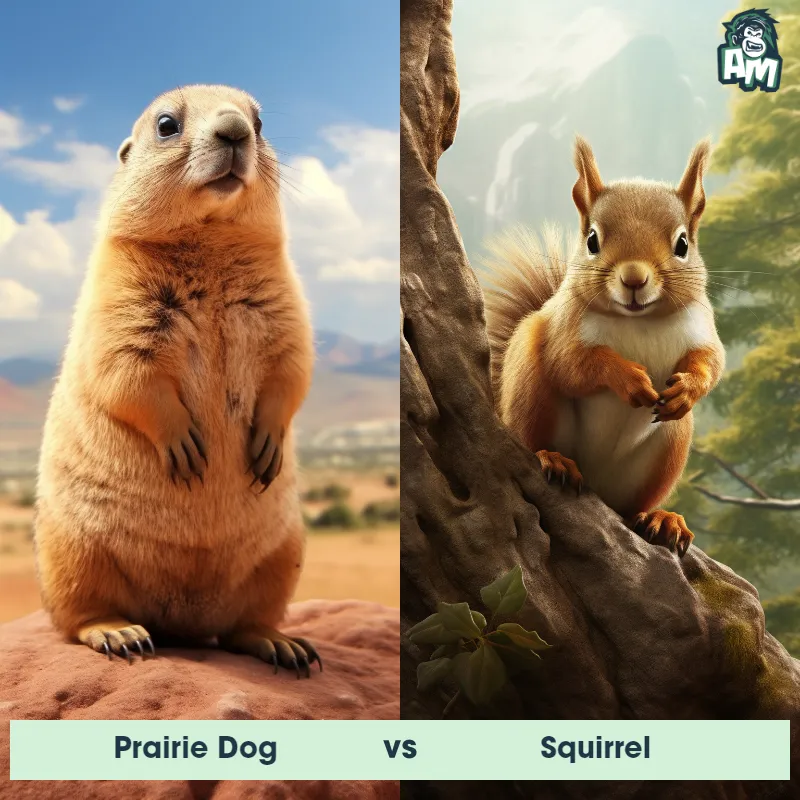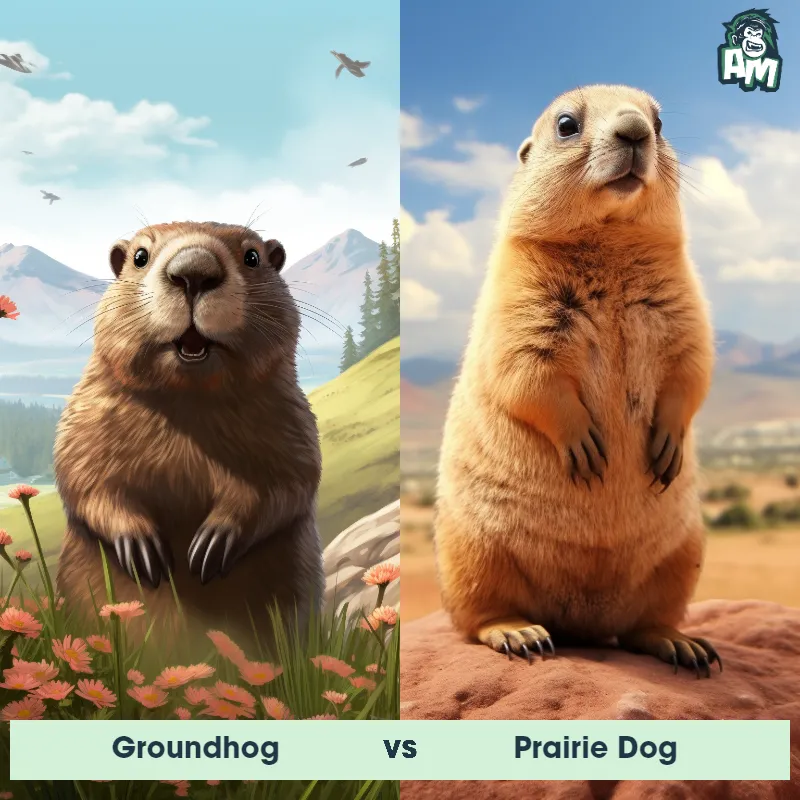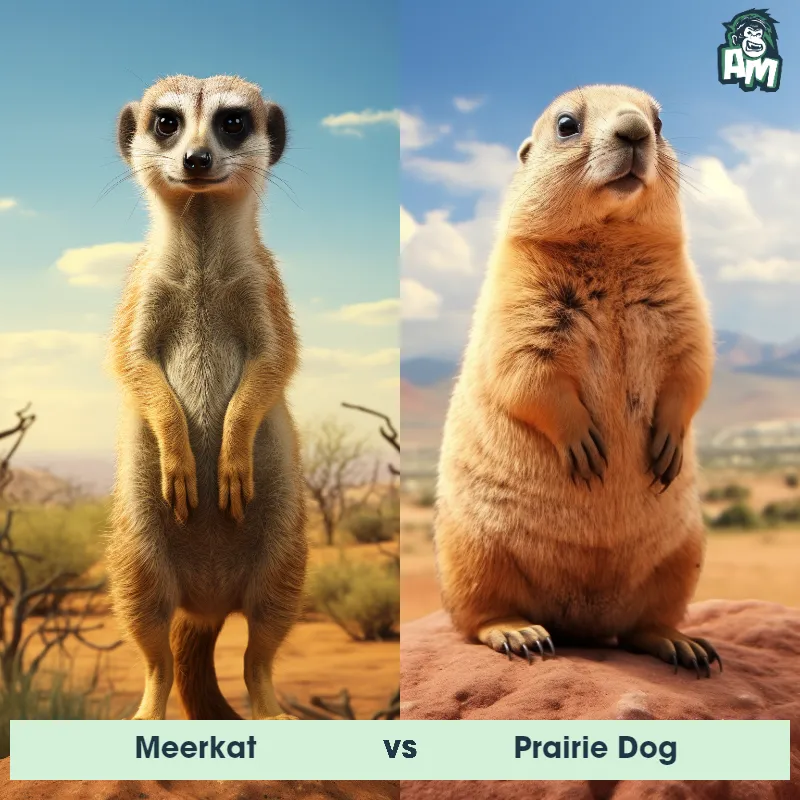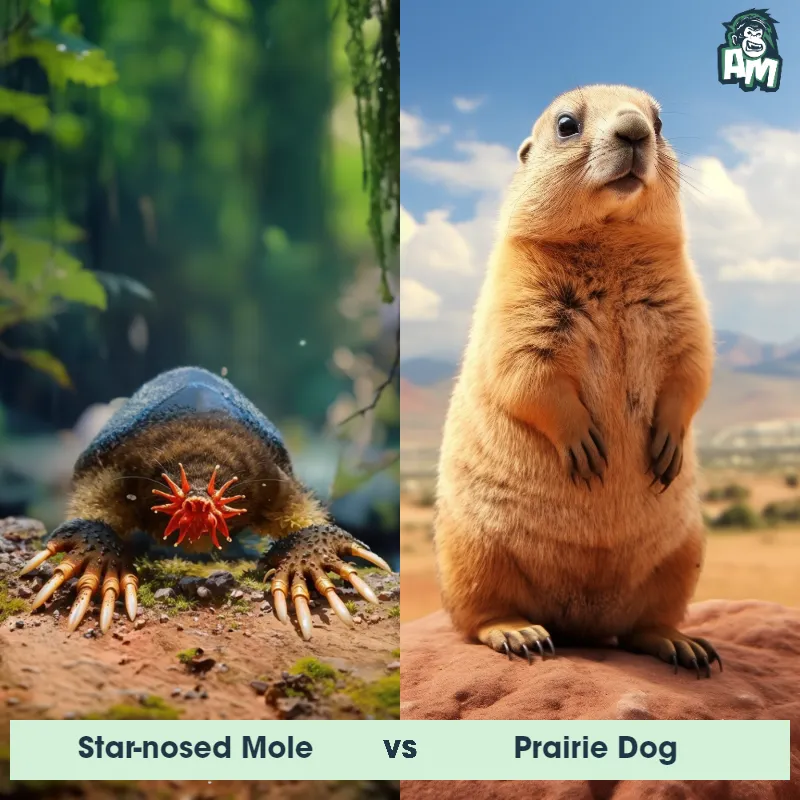The Prairie Dog
The Prairie Dog, also known as Cynomys, is a small burrowing rodent found in the grasslands of North America. They have stout bodies with short legs, a short tail, and small ears that are often covered by tufts of fur. Prairie Dogs have a reddish-brown or tan fur color, with a lighter underside. They are social animals that live in complex underground burrow systems called towns, which can cover vast areas and contain multiple families. These burrows have chambers for sleeping, rearing young, and storing food. Prairie Dogs are known for their high-pitched calls, which they use to communicate with each other.

| Prairie Dog | |
|---|---|
| Size | 12-16 inches (30-40 cm) |
| Weight | 1-3 lbs (0.45-1.36 kg) |
| Speed | 35mph (56km/h) |
| Key Strength | Ability to burrow quickly to escape danger |
| Biggest Weakness | Small size and lack of strong defensive capabilities |
| Scientific Name | Cynomys |
| Family | Sciuridae |
| Habitat | Grasslands |
| Geography | North America |
| Diet | Herbivore (Grasses, seeds, and occasionally insects) |
| Lifespan | 3 years - 5 years |

The Prairie Dog
The Prairie Dog, also known as Cynomys, is a small burrowing rodent found in the grasslands of North America. They have stout bodies with short legs, a short tail, and small ears that are often covered by tufts of fur. Prairie Dogs have a reddish-brown or tan fur color, with a lighter underside. They are social animals that live in complex underground burrow systems called towns, which can cover vast areas and contain multiple families. These burrows have chambers for sleeping, rearing young, and storing food. Prairie Dogs are known for their high-pitched calls, which they use to communicate with each other.
Fun Fact: Prairie Dogs have an impressive system of communication that includes different vocalizations and movements, allowing them to communicate danger or the presence of predators to their fellow colony members.
| Prairie Dog | |
|---|---|
| Size | 12-16 inches (30-40 cm) |
| Weight | 1-3 lbs (0.45-1.36 kg) |
| Speed | 35mph (56km/h) |
| Key Strength | Ability to burrow quickly to escape danger |
| Biggest Weakness | Small size and lack of strong defensive capabilities |
| Scientific Name | Cynomys |
| Family | Sciuridae |
| Habitat | Grasslands |
| Geography | North America |
| Diet | Herbivore (Grasses, seeds, and occasionally insects) |
| Lifespan | 3 years - 5 years |
Prairie Dog Matchups
We use AI to simulate matchups between the Prairie Dog and other animals. Our simulation considers size, strength, and natural predatory behaviors to determine the most likely outcome.
Prairie Dog: Diet, Predators, Aggression, and Defensive Behaviors
What do Prairie Dogs eat?
Prairie Dogs are herbivores, primarily feeding on grasses, seeds, and vegetation such as roots, leaves, and flowers. They are known to supplement their diet with insects, especially during the summer months when protein is needed for raising their young.
Do Prairie Dogs have any predators?
Yes, Prairie Dogs have several predators in the wild, including coyotes, badgers, foxes, eagles, hawks, bobcats, and snakes. These predators often rely on the burrow systems of Prairie Dogs to access and hunt them.
Are Prairie Dogs aggressive?
Prairie Dogs are not typically aggressive towards humans or other animals, but they can display territorial behavior towards neighboring colonies or individuals within their own colony. They may also exhibit defensive behavior if they feel threatened.
Do Prairie Dogs fight?
Prairie Dogs are known to engage in territorial disputes and intra-colony squabbles that can escalate into physical fights. These fights involve chasing, vocalizations, and physical aggression, such as biting and clawing.
How do Prairie Dogs defend themselves?
Prairie Dogs have several defense mechanisms to protect themselves from predators and threats. They use alarm calls to alert others of danger, retreat into their burrows for safety, and stand on their hind legs to scan for potential threats. They may also mob predators in groups to drive them away.
What is the biggest weakness of Prairie Dogs in a fight?
The biggest weakness of Prairie Dogs in a fight is their relatively small size and lack of physical defenses compared to their predators or larger competitors. While they can be feisty and resilient, their small stature makes them vulnerable to being overpowered or injured in confrontations.
Fun Fact: Prairie Dogs are meticulous architects and engineers, constantly maintaining and expanding their burrow systems. They keep the entrances clean and create multiple escape routes, which can help protect them from predators such as coyotes and raptors.
Fun Fact: Prairie Dogs are important contributors to their ecosystem, as their burrows help aerate and fertilize the soil, allowing for a more diverse plant community. Their grazing behaviors also shape the landscape and provide food for other animals, making them keystone species in the grassland ecosystem.




